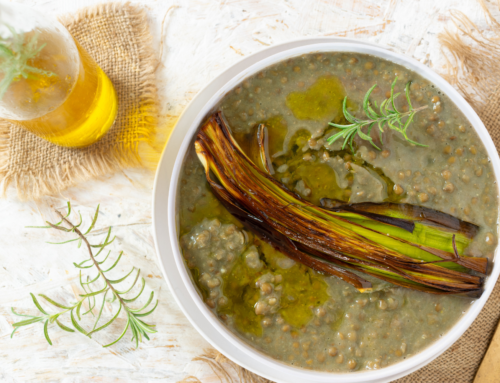One of the most common meat dishes in Israel, alongside shawarma, is pargiyot. The word means “young chicken,” because that’s the meat that was traditionally used. However, today we use boneless chicken thighs. To be honest, I’ve never had the traditional version and I don’t know when the switch was made. But from my experience consuming pargiyot, the boneless thighs work perfectly.

When you’re grabbing food on the go, shawarma can sometimes be quite heavy, so pargiyot offers a slightly lighter alternative. Not only that but since it’s chicken, there are so many flavor options and combinations out there. From light seasonings and rubs to quick sauces and overnight marinades. The key thing that makes pargiyot, well, pargiyot, is the way that it’s cooked.
Chicken thighs are skinned, boned, and cubed (or if you’re pressed for time, you can just buy them this way), and then skewered on kebab sticks. Unlike other types of shish kebabs, no vegetables are placed in between. The skewers are just packed with chicken meat and then grilled until slightly crispy.
As well as being a great take-out food, pargiyot is commonly cooked on a barbecue or mangal in Hebrew. They can either be eaten alongside rice or salad or wrapped up inside a laffa or pita along with some hummus.
This recipe uses a basic seasoning called “Al Ha’esh,” which translates to “on the fire” and is essentially slang for grill or barbecue. This seasoning is widely available in stores in Israel, but I’ve broken down the components so that you can make the Israeli spice mix for yourself. If you have some extra time, you can also marinate the skewered pargiyot for a few hours in BBQ sauce or any other sauce you like.
Notes
- Using dark chicken for this grilled pargiyot recipe is important since it tends to be juicer and also takes a bit longer to cook. If you can only get your hands on chicken breasts, then adjust your cooking times, cooking for slightly less, and keep in mind that it might turn out a bit dry.
- If you’re using wooden kebab skewers, try soaking them in water for about half an hour to help prevent them from splintering when you load them.
- If you don’t have a mortar and pestle, you can just buy ground versions of the spices instead. The final spice mixture will inevitably be more than you need. You can store whatever you don’t use in a sealed, airtight container in a cool, dry place (like the kitchen pantry).
- You can also thread chopped vegetables onto the skewers, like onions, potatoes, or bell peppers.
- This is a typical Israeli pargiyot marinade. However, there are so many variations available. Here are some more recommendations if you want to try something different. ¼ cup of any of these seasonings will work perfectly.
- Teriyaki sauce
- Honey, soy sauce, and minced garlic cloves.
- Harissa
- Honey mustard pargiot: an equal combination of honey and Dijon mustard.
- Lebanese seven-spice seasoning (a.k.a baharat)
- Shawarma seasoning
FAQs
What is a pargiyot in English?
Paryigot (or pargiot) means “baby chicken” in Hebrew as that was the traditional meat of choice. However, today it’s commonly made with either boneless chicken thighs or boneless chicken breasts.
The Israeli skewered chicken is also most commonly cooked on a mangal (a barbecue grill) and served for Israel Independence Day and during summer.
Do you steam chicken before grilling?
There’s no need to steam, parboil, or boil chicken before grilling it.
How long do you marinate chicken thighs?
You want to marinate chicken thighs for 20 minutes minimum. However, you can leave them to marinate for up to 24 hours in an airtight container in the fridge.
Can you marinate chicken for too long?
Yes, according to the USDA, you can marinate for up to two days only. But any later than that and the marinade can break down the meat fibers, causing it to become mushy, which we don’t want!
Do you cover chicken when grilling?
Yes. If your barbecue grill has a cover, I recommend cooking the chicken with the cover on.
How do you serve pargiyot?
You can serve this pargiyot chicken recipe as mentioned with pita bread, hummus, tahini sauce, and pickled cabbage. You can also change up the salad and sauce and use something like amba (tangy mango pickle relish). Another option is to serve the chicken skewers as a main dish with couscous or rice pilaf and a salad like fattoush.
How do you store pargiyot?
You can store leftover Israeli grilled chicken in an airtight container in the fridge for up to four days. Remove the chicken from the skewers and reheat it in the microwave.
Another option is to un-skewer the chicken and freeze it for up to three months. Thaw it in the fridge overnight before reheating it in the microwave.

Grilled Chicken and Hummus in Pita (Pargiyot)
Ingredients
Spice Mix
- 2 tsps Black peppercorns or ¼ to ½ teaspoon ground black pepper
- 2 tsps Sweet paprika
- ½ tbsp Kosher salt
- 1 tsp Garlic powder
- 1 tsp Onion powder
- 1 tsp Coriander seeds
- 1 tsp Brown sugar
- ¼ tsp Cayenne pepper
Chicken
- 1¾ pounds Skinless boneless chicken thighs, cut into 1-inch chunks
- ¼ cup Olive oil, optional
Serving
- 8 Pitas
- 8 tbsps Hummus
- 8 Portions of pickled cabbage, salad, or pickles
- 8 tsps Tahini sauce
Instructions
- For the spice mix, put the peppercorns, paprika, salt, garlic powder, onion powder, coriander seeds, brown sugar, and cayenne pepper in a mortar. Then crush them using a pestle until a fine consistency is achieved (it doesn’t have to be perfect; some smaller lumps are okay). Alternatively, you can use a spice grinder.
- For the chicken, lay the chicken out in a single layer and generously sprinkle 3 tablespoons or so of the spice mix over them. Use your fingers to massage the spices into the chicken. Alternatively, you can mix 3 tablespoons of spice mix with the olive oil, if using, and brush the mixture over the chicken pieces.
- Using metal or pre-soaked wooden skewers, carefully skewer the marinated chicken pieces. At this stage, you can cover the skewers and store them in the fridge for a couple of hours for the flavors to develop further.
- Place the skewers on a hot grill (or you can use a griddle). Keep turning them over every couple of minutes so that they cook evenly on all sides. The total cooking time should take 10 to 15 minutes. If you don’t have a grill, you can set your oven to broil and place the skewers on a baking sheet in the oven, turning after a few minutes, and checking to make sure they don’t burn. The chicken is cooked when its internal temperature is 165 degrees F.
- For serving, brown the pita bread on the grill for 1 to 2 minutes, turning them over halfway.
- Carefully remove the pita and spread about 1 tablespoon of hummus inside each one, then add a couple of tablespoons of the pickled cabbage. Use a fork to carefully push the pargiyot off the skewer and into the pita.
- Drizzle the chicken with some tahini sauce and serve.





